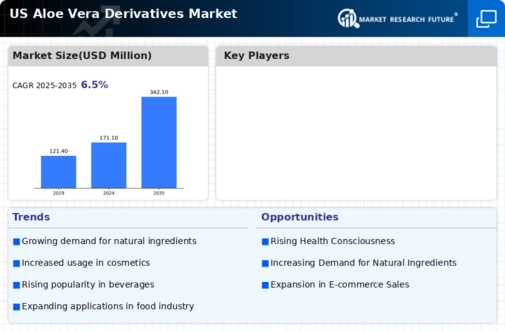US Aloe Vera Derivatives Market Summary
The US Aloe Vera Derivatives market is projected to experience substantial growth from 171.1 million USD in 2024 to 342.1 million USD by 2035.
Key Market Trends & Highlights
US Aloe Vera Derivatives Key Trends and Highlights
- The market is expected to grow at a compound annual growth rate of 6.5 percent from 2025 to 2035.
- By 2035, the market valuation is anticipated to reach 342.1 million USD, indicating robust demand for aloe vera derivatives.
- In 2024, the market is valued at 171.1 million USD, reflecting a strong foundation for future expansion.
- Growing adoption of natural ingredients in cosmetics and personal care products due to increasing consumer awareness is a major market driver.
Market Size & Forecast
| 2024 Market Size | 171.1 (USD Million) |
| 2035 Market Size | 342.1 (USD Million) |
| CAGR (2025-2035) | 6.5% |










